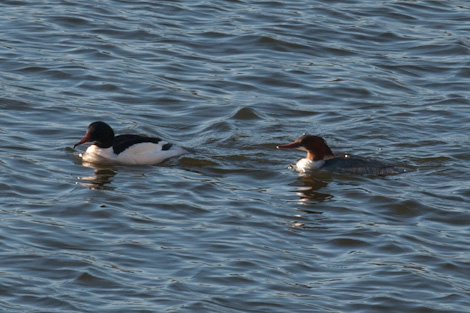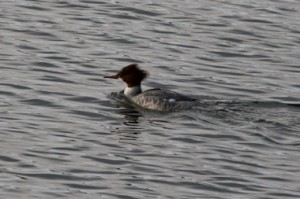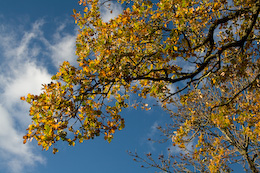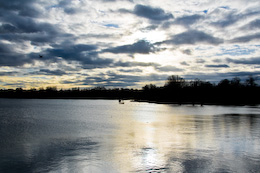We all have certain triggers in life that remind us of past times, or tell us that something new is happening. For me, the sign that Winter has arrived is the appearance of goosanders (mergus merganser) at Daventry Country Park. This Winter I was surprised to see them at the end of November, particularly as, if you remember, it was quite mild and sunny. However, a few days later the weather turned chilly and there was a bit of frost at night. Winter had come.
So, why am I so interested in these birds? It is not just their weather-forecasting abilities that I like about them. They really are stunning birds, particularly if they catch the Winter sun. They are quite a large bird, not really looking like a duck. They swim low in the water, being very pointy with a thin red bill, which gives their group its name – Sawbills. The serrated inner edge allows them to grip slippery fish, which they search for by swimming with their head under water before diving down with a jump to get them. (Amazing fact number one – they can dive for up to 45 seconds.)
The duck and drake look quite different. Whilst the duck is grey with a chestnut coloured head with a shaggy crest, the drake is much sleeker. He has a bottle green head which looks black unless it catches the sun, some black on his back, but the rest is mainly white (with a hint of pink!).
Whilst these are not the rarest of birds, in fact their numbers are increasing (there are about 2,600 breeding pairs, numbers tripling in Winter to about 16,100 birds) they do face a threat from the owners of fisheries due to their particular love of salmon and trout. (Amazing fact number two – a young goosander eats 33kg of fish in order to reach adulthood.)
Whilst researching this article, I also discovered amazing fact number three (well, puzzling fact really) – after breeding most of the male goosanders from Europe migrate to the north of Norway to moult – I have no idea why they do that. The females stay put – I am not sure if this is due to parental requirements.
So, next time you are in the country park in Winter (the goosanders tend to stick around into February) look out for some very white and black, long, sleek pointy birds. They tend to sit around in groups, close to the dam, particularly from about halfway up.
To quote from Birds Britannica goosanders ‘spend long periods asleep or loafing on the water and, on a cold, bright Winter’s day there are few more lovely visions than a group resting in a backwater, their smooth contours and patterns mirrored in the river’s surface.’



